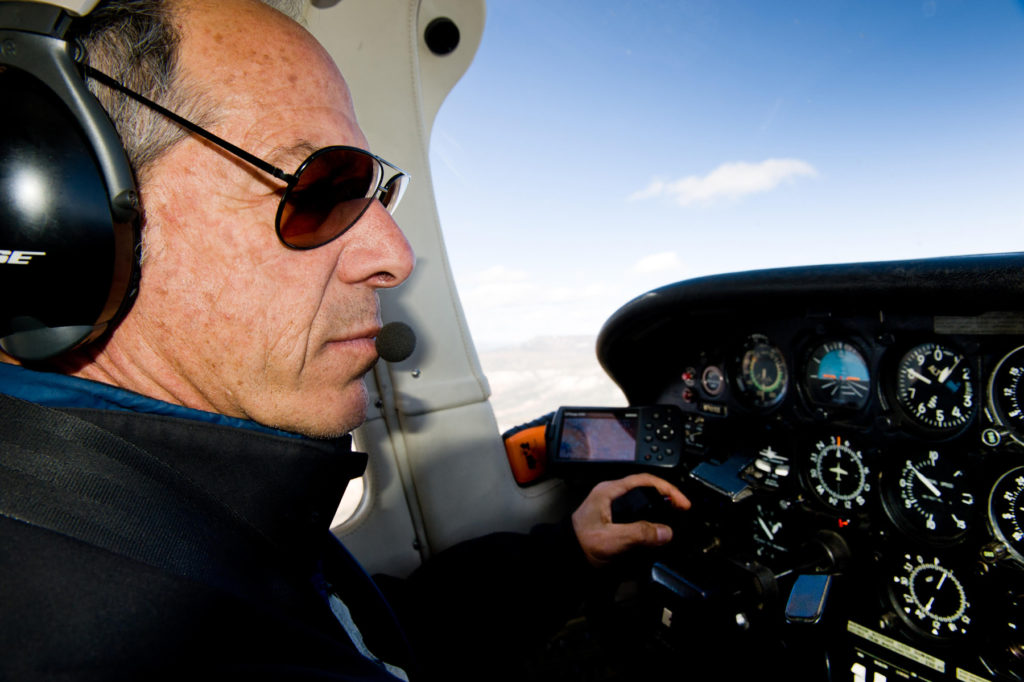- Home
- >
- Preservation Archaeology Blog
- >
- Greater Chaco from the Air

(August 22, 2018)—Together with EcoFlight, a nonprofit based in Aspen, Colorado, Archaeology Southwest participated in a series of flights over Chaco Canyon and the Greater Chaco Landscape on August 2, 2018. Bruce Gordon, EcoFlight’s president, piloted the plane on our four trips from the Farmington, New Mexico, airport south to Chaco Canyon and then back north up the Great North Road.
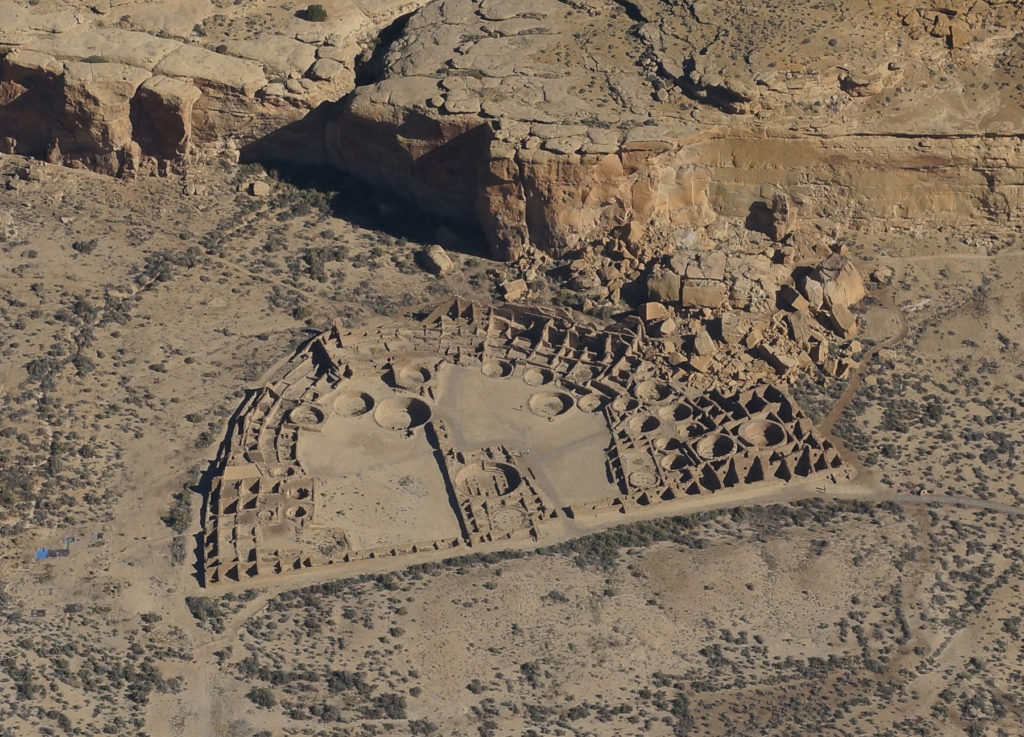
Representative from five New Mexico Pueblos came on the flights: Acoma, Pojoaque, Santa Ana, Santa Clara, and Zuni. I was very pleased to welcome Governor Kurt Riley and Historic Preservation Officer Damian Garcia, both of the Pueblo of Acoma. Acoma and Archaeology Southwest are together embarking on a limited ethnographic study of the Greater Chaco Landscape later this month. Two members of the media also accompanied us on the flights.
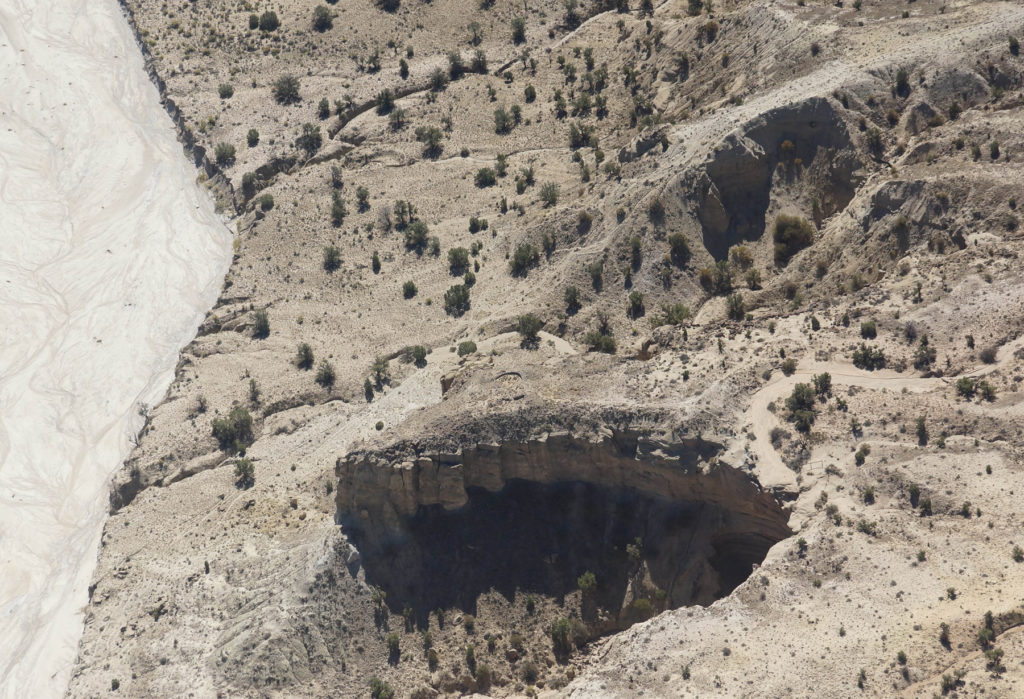
Our purpose in flying over the Greater Chaco Landscape with Pueblo leaders and media was to raise awareness of the devastating impacts of oil-gas development. In addition, the bird’s-eye view reinforced for participants the logic of focusing on preservation within the 10-mile cultural protection zone around Chaco Culture National Historic Park. New Mexico Senators Udall and Heinrich have recently introduced the Chaco Cultural Heritage Area Protection Act of 2018. This bill will withdraw the Federal (BLM-managed) minerals within just over 300,000 acres of land within 10 miles of Chaco Culture National Historical Park and two outlying Park units (Pueblo Pintado and Kin Y’aa).
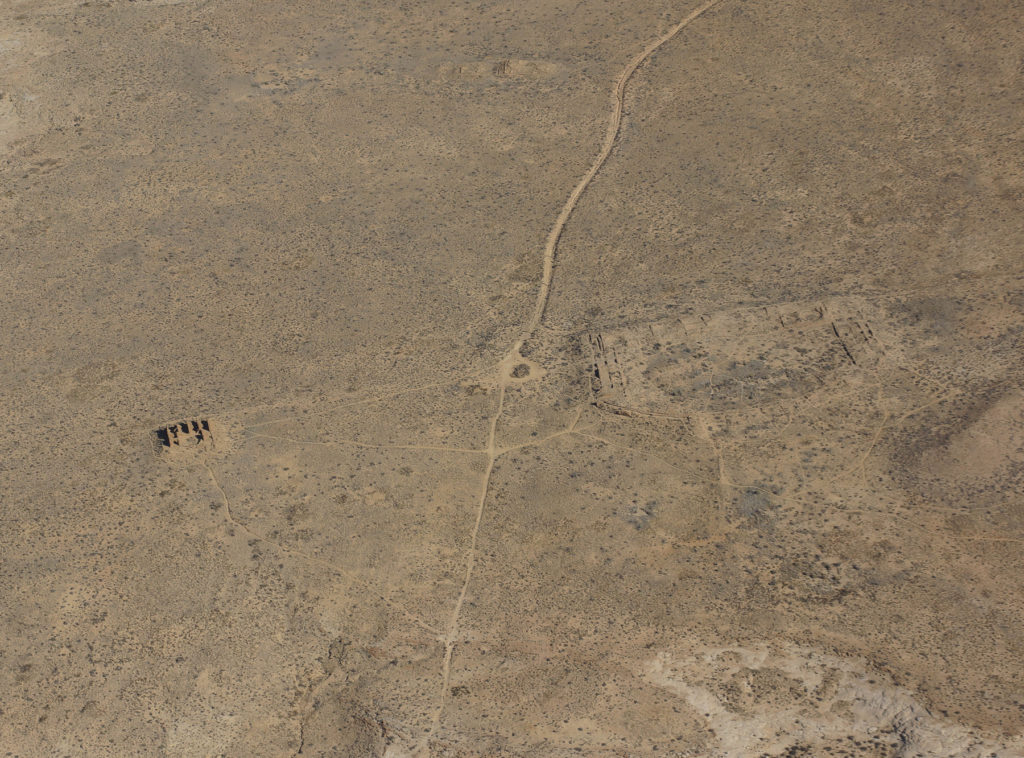
After the flights, Pueblo leaders expressed joy at seeing their ancestral dwellings from the air, particularly the site of Pueblo Bonito. Their joy was tempered with clear knowledge of the tremendous impacts of oil-gas activity on their ancient ancestral lands and sacred landscapes.
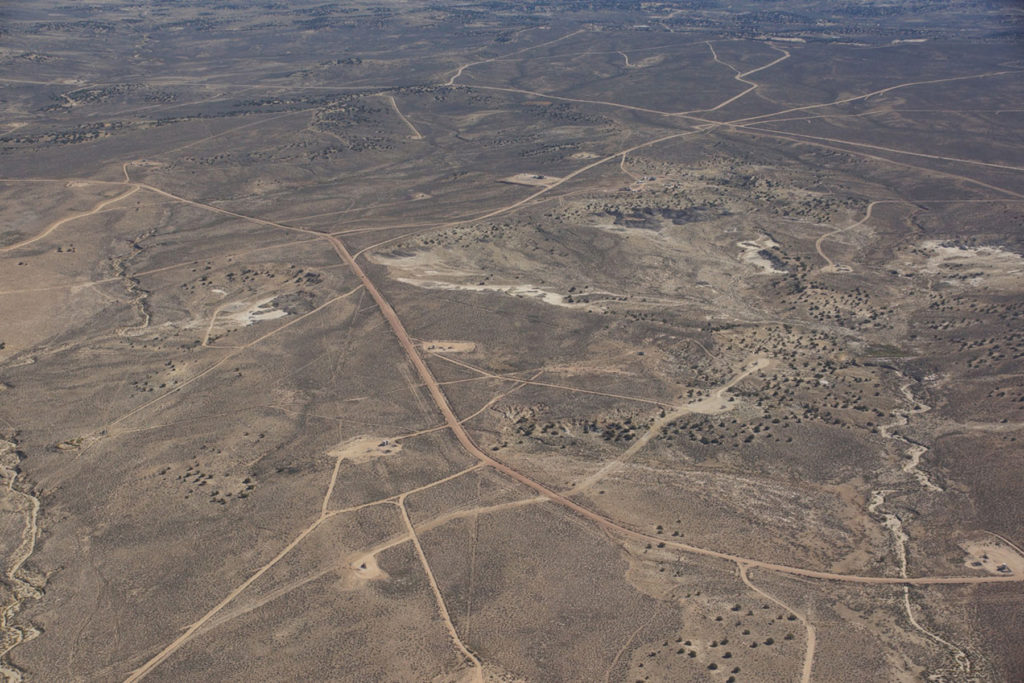
Archaeology Southwest has been a strong proponent of the 10-mile protection zone since our work in the Greater Chaco Landscape began four years ago. From the air, it is clear that at about 10 miles from the Chaco Park boundary line, the Greater Chaco Landscape begins a serious transition. South of the 10-mile line, the landscape is relatively pristine. Certainly, there is some development within this zone–limited oil-gas facilities and some powerlines and pipelines that cross the area. North of the 10-mile line, the landscape begins to show the effects of serious industrial development of the oil-gas resources that lie beneath the surface. Some have wondered if the 10-mile zone was an arbitrary choice. Our flights over the area made it clear to all participants that the protection zone around Chaco is indeed real and very worthy of our efforts to fight for it!
For more, see the EcoFlight and Archaeology Southwest film of an earlier flight over Chaco, made in 2014.
